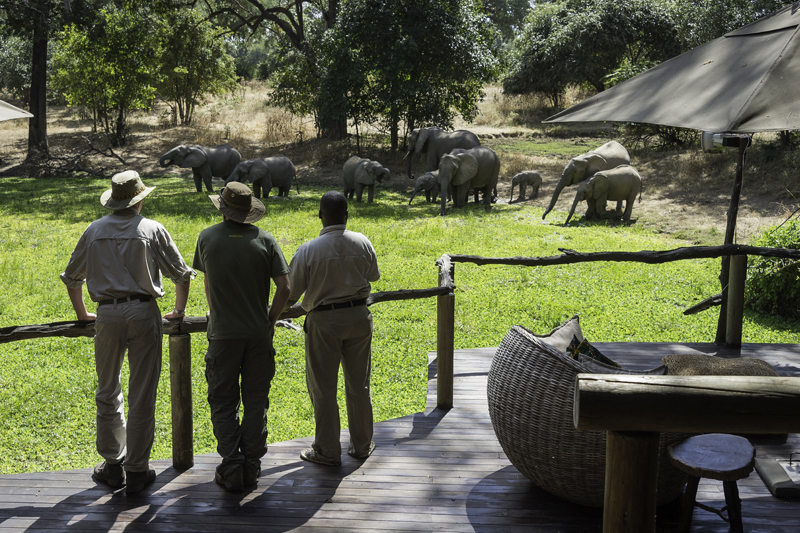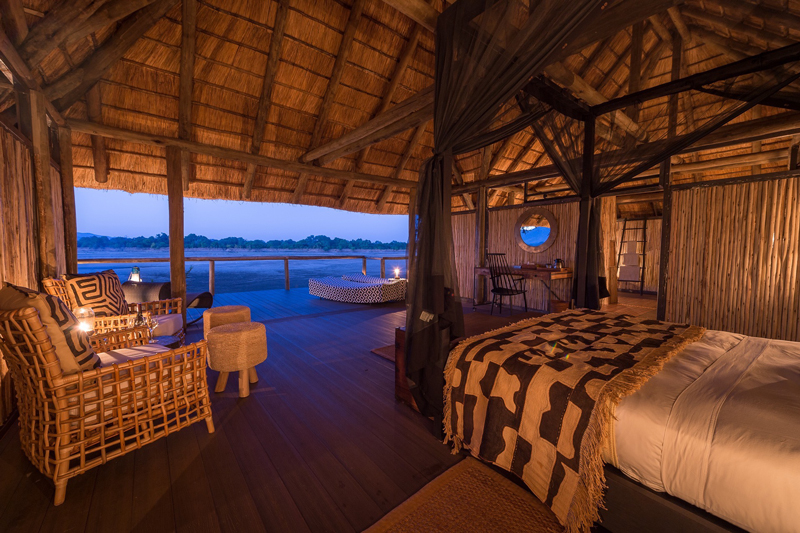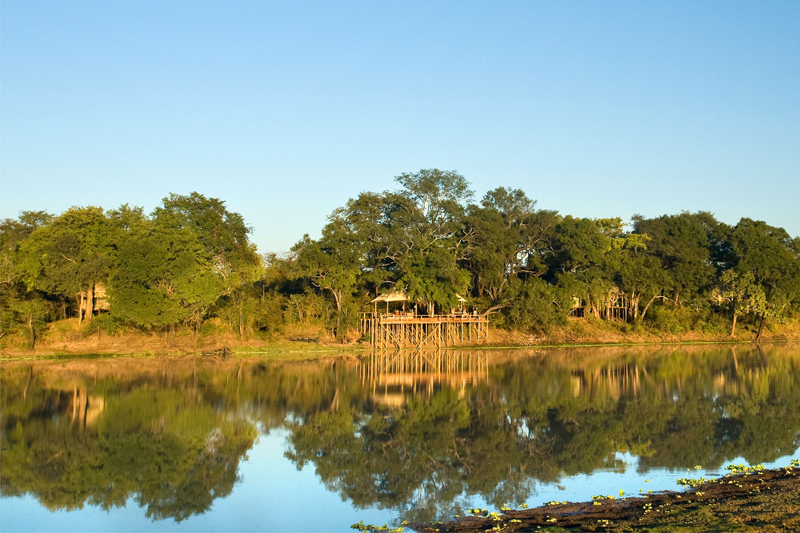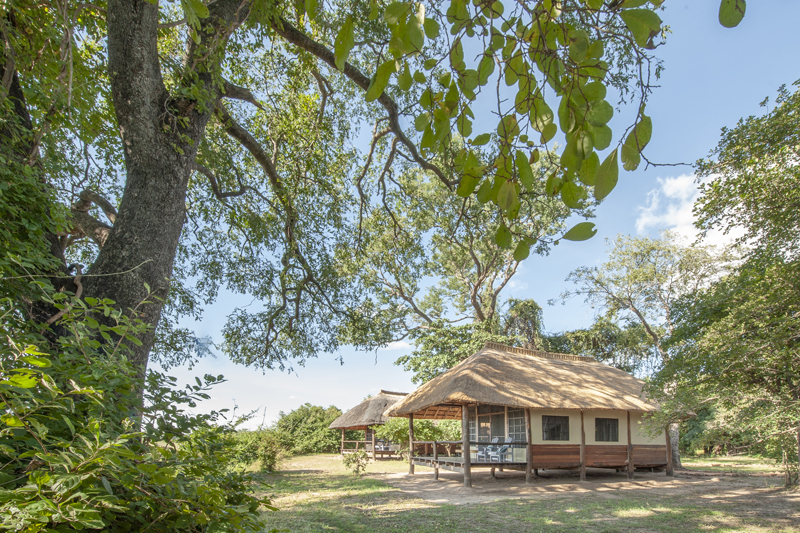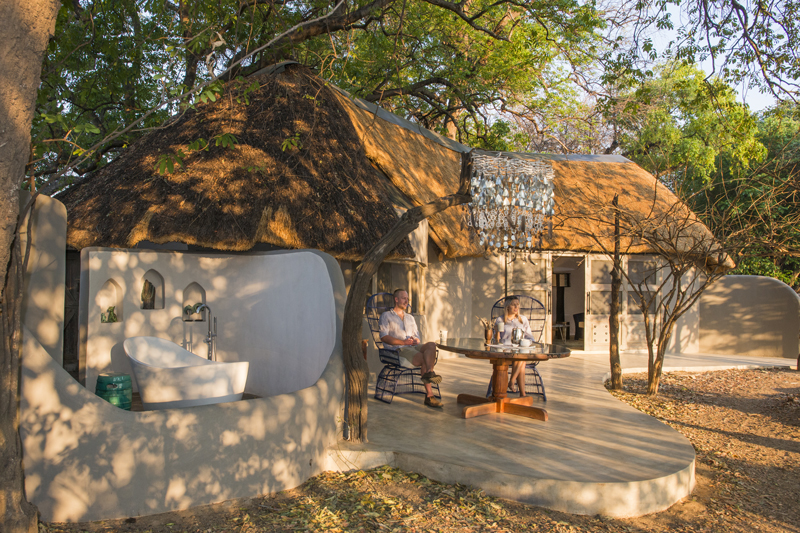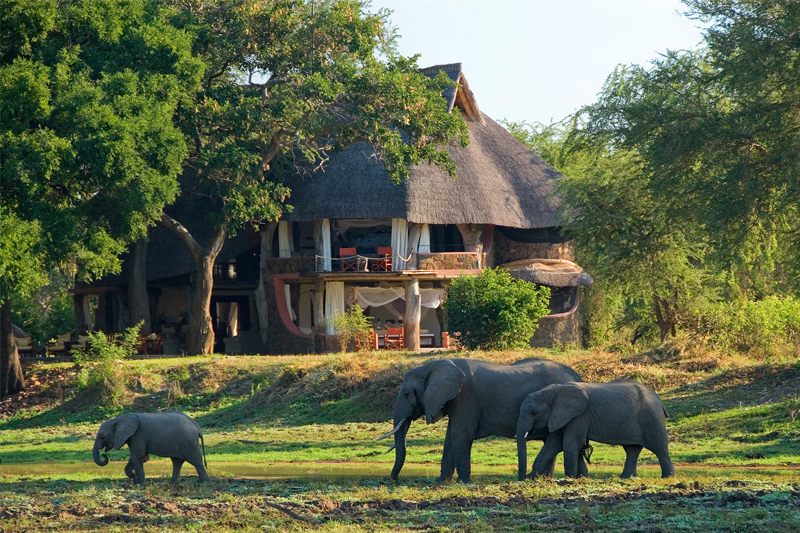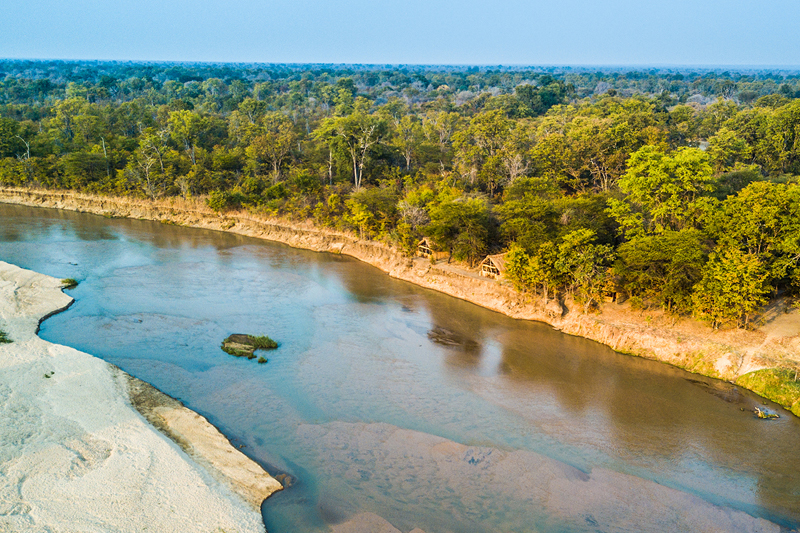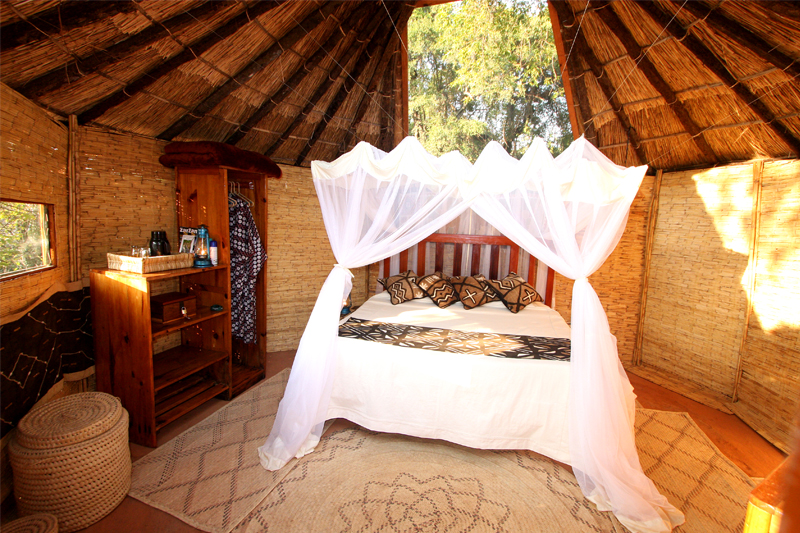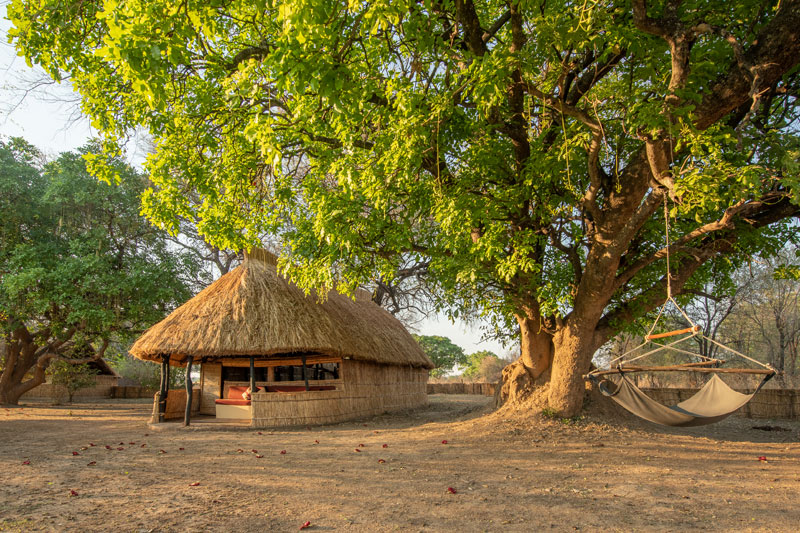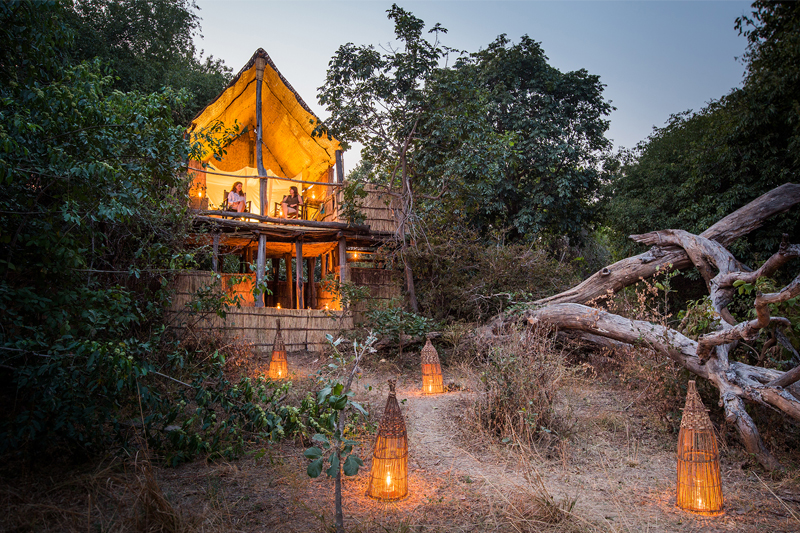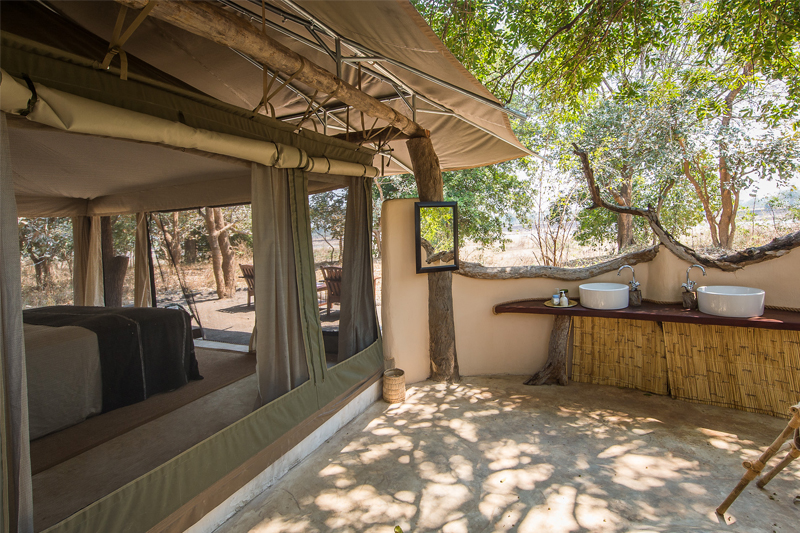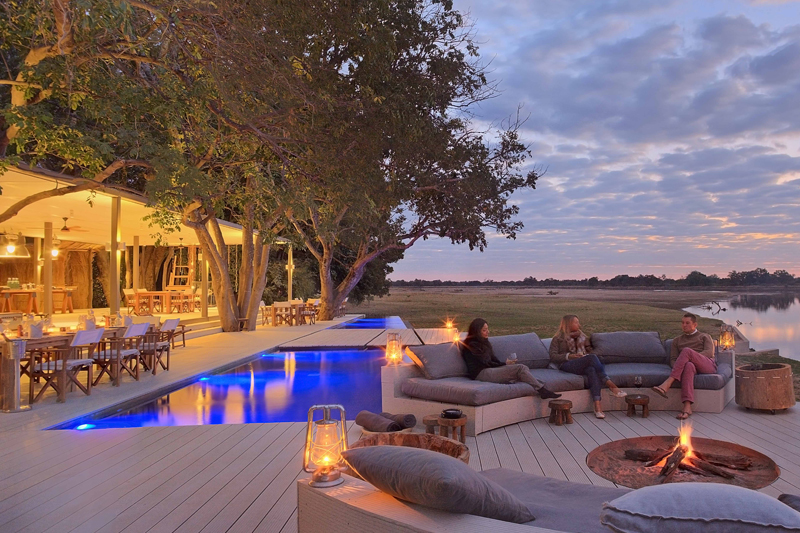South Luangwa and North Luangwa National Parks
The Luangwa Valley, lying in the north-east of the country, is considered as one of the finest wilderness & wildlife areas.
South Luangwa National Park in particular is often attributed as the home of the traditional walking safari, one of the key reasons for visiting. The valley forms the southern end of the Great Rift Valley and the floor is about 1,000ft lower than the surrounding plateau. Through the centre flows the Luangwa River, fed by dozens of ‘sand rivers’ which flow during the rainy season causing it to become a raging torrent.
The Luangwa frequently alters its course from season to season, causing many ox-bow lakes to form. It is these lakes which are very important to the ecology of the valley and account for the high carrying capacity of the parks.
The North Luangwa National Park covers an area of 4,500 sq. kms, but except for a few wilderness camps along the Mwaleshi River, it is mostly closed to the public. Certainly there are few roads, and all game viewing is done on foot. A safari here is more about the wilderness experience, although large herds of herbivores, particularly buffalo, are encountered, often shadowed by the resident lion prides.
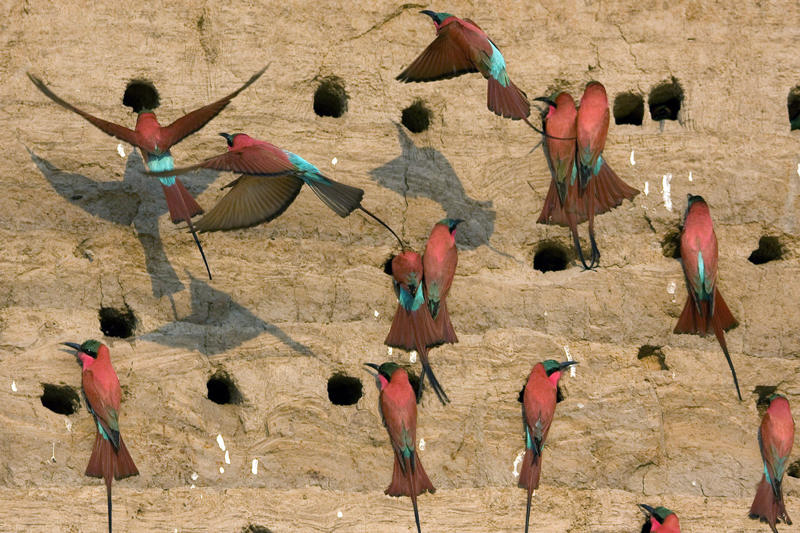
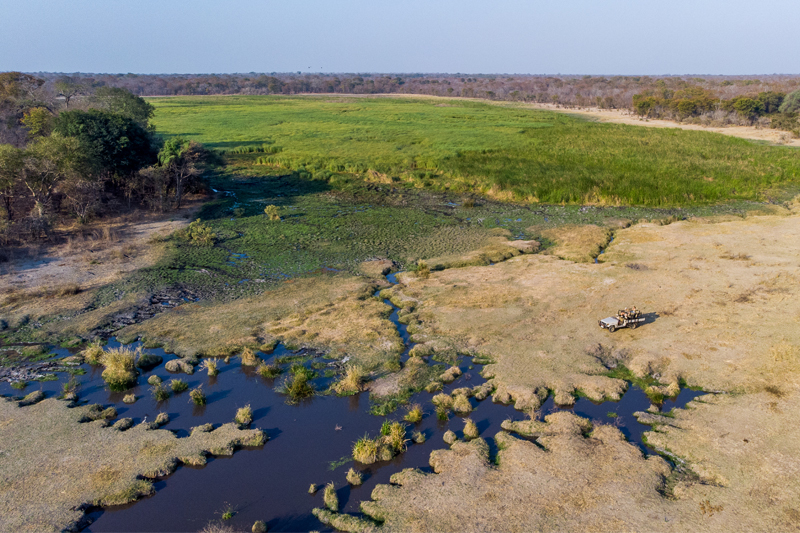
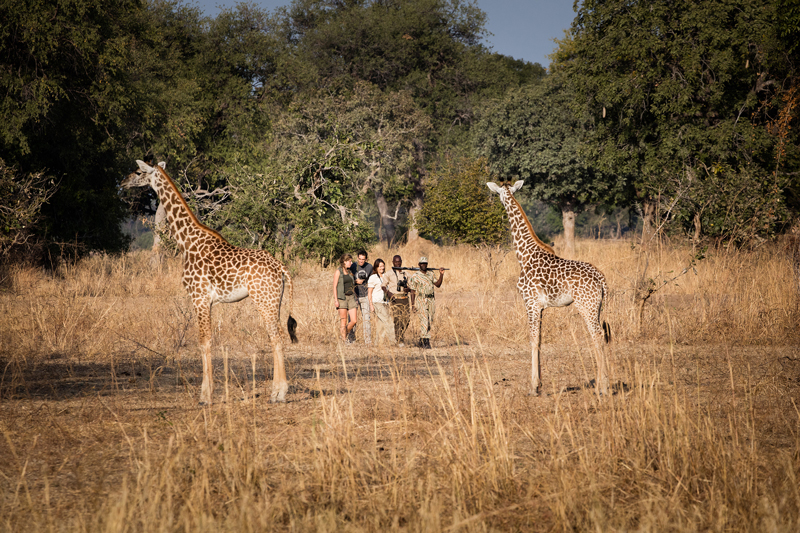
Between the North and the South parks, on the eastern bank of the river, Luambe National Park can be found. It is small, covering an area of only 250 sq.kms., and is usually only visited when travelling between north and south parks by road. There is one safari camp.
The South Luangwa National Park covers an area of 9,000 sq. km and is the park most frequently visited by tourists. Most of the park is situated to the west of the river, though it does extend eastwards across the river in two places (Nsefu and Luamfwa). There are higher quantities of game than in the northern park, and a far greater variety of small lodges and seasonal bushcamps. The Mfuwe region, close to the local airport, is the busiest part of the park, with several lodges close together traversing the same central section of the park, but once you move away from Mfuwe (north or south) the safari experience becomes very exclusive.
The main safari season is fairly limited, starting in June and ending before the onset of the rains at the end of October. Game viewing is superb at this time, especially as the dry season progresses and animals become increasingly reliant on the Luangwa River. Some properties remain open during the rainy season (November to May) and offer exceptional ‘green season’ prices to entice travellers. Although game viewing is severely restricted at this time, bird watching can be superb.
Many of the safari operators have one main, more permanent, lodge complemented by a number of the seasonal bushcamps. In most instances, this ‘main’ lodge is located in the central Mfuwe sector, with easy access to the airport and supplies. The Mfuwe region does offer fantastic game viewing but is also the least exclusive section of the park. A few operators have their main lodge or camp located away from the busy Mfuwe region, therefore it is not necessary to spend time in the Mfuwe region if you are seeking exclusivity.
The seasonal bushcamps are set up in more remote areas of the park at the beginning of each season and due to the limited number of roads and tracks, often concentrate on walking safaris. These bushcamps are traditionally very simple, made of grass and reeds (though some are now also under canvas) and normally accommodate no more than 8 guests. Not surprisingly, there has been a trend towards more comfortable bush camps in recent years, though some still offer an adventurous experience.
Activities within the South Luangwa include day and night game drives (night drives are particularly productive for leopard sightings) and walking. Walking is available as an activity from most camps, some of which sell themselves on being much more orientated to walking than driving. For anyone looking for adventurous walking experiences, there are a few dedicated multi-day walking trails available. A number of lodges also use wildlife hides/blinds.
Wildlife viewing in South Luangwa is exceptional. Elephant, although slightly smaller than their southern African savannah counterparts, are plentiful, as are buffalo (in huge herds), kudu, waterbuck, puku, impala, bushbuck, warthog and reedbuck. Endemic species include the Thornicrofts giraffe (more commonly seen in the southern sector), and Cookson’s hartebeest (more common in the northern sector and in the North Luangwa). However, the valley is perhaps best known for its predator populations, in particular lion and leopard, the latter of which are seen three days out of four. However, cheetah are not found and you have little chance of seeing rhino.
The birdlife of the Luangwa is equally exceptional, with over half of the total Zambia species (around 700) being recorded here. Special sights during the dry season include the impressive flocks of crowned crane, and from August onwards, the carmine and white-fronted bee-eaters which gather to nest in the river bank.
For further information on South Luangwa Safari options please call us on +44 (0) 1787 888590 or email us via our Contact Us page to speak to one of our expert safari specialists.


